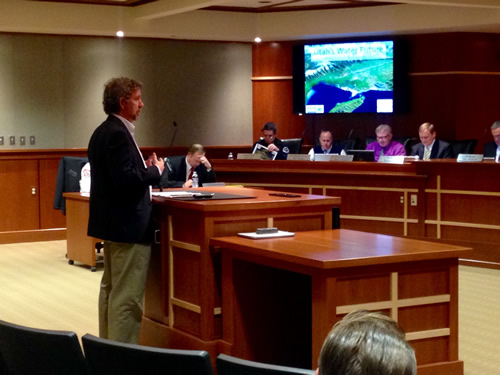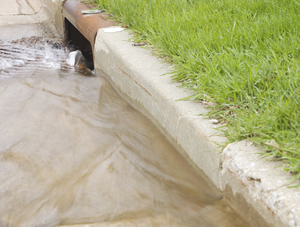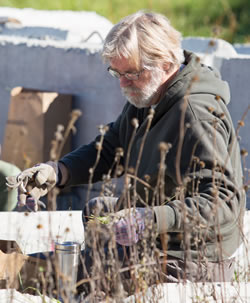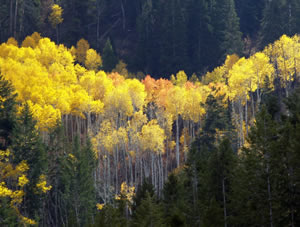News and Highlights
This is a list of past iUTAH EPSCoR news from 2012 to 2018.
February 19, 2016
iUTAH Team Lead Receives NSF CAREER Award

The National Science Foundation (NSF) has named Utah State University junior faculty member Jeff Horsburgh winner of an Early CAREER award. Jeff is one of two Engineering faculty members at USU to be chosen to receive the prestigious CAREER Award this year. The grant of approximately $500,000 will help advance fundamental research in areas of water resources engineering and computer science.
Horsburgh is using iUTAH datasets, data, and sociology infrastructure to inform his research which contributed to this award. His research will focus on smart water metering technology, including new tools to collect, shrink and transform the data into useful information products for water managers.
For more on the Horsburgh research, visit “Two USU engineering professors receive prestigious grants" published on February 24, 2016, Herald Journal
February 15, 2016
City Councils Hear Water Survey Results
Throughout January, iUTAH researchers Doug Jackson-Smith, Melissa Haeffner, and Sarah Hinners presented the findings of the iUTAH 2014 survey to city councils in the greater Salt Lake Valley area.
Initially, more than 2,300 households were surveyed in Cache, Salt Lake, and Wasatch counties in the summer of 2014. The survey collected detailed information about how local residents in distinctive neighborhoods use and think about water in their daily lives. Since that time, survey results have been compiled and processed, and are available to researchers, water managers, and the general public at the iUTAH website. The survey provides extensive scientific data on current residential water management and public support for a range of water policies.
The next step of this process is to share these findings with local and state water managers. So far, presentations on how local residents use and think about water in their daily lives have been made to the South Jordan, Riverton, and West Jordan city councils, reaching between 35 and 60 participants. “We are excited to continue building our relationship with the people of the Salt Lake Valley,” said Doug Jackson-Smith. “It was a great opportunity to return to the city to share our survey results while introducing our ongoing project to elected city council persons. “
More presentations will be made in the coming months, including one to the Salt Lake City council.

Photo Credit: Melissa Haeffner
January 18, 2016
Utah State University ended its "year of water" by featuring USU and iUTAH researcher Scott Jones, and other scientists and community members in the Utah State University Winter 2016 magazine. Scott helps users understand vital processes like snowmelt dynamics by interpreting data gathered from meteorological stations.
“We want to understand processes like snowmelt dynamics, which tell us when we can expect to see water filling our reservoirs," Jones says. "We also want to understand how vegetation affects stow pack and water delivery to our reservoirs and groundwater."

Scott Jones, a professor of environmental soil physics at USU. Credit Donna Barry, University photographer.
January 14, 2016
Recent Updates of iUTAH Data Are Now Available
Good news in 2016! iUTAH researchers have been busy generating datasets, and the iUTAH data repository is growing. To publish your dataset (and even have it featured here), deposit it in the repository, and contact the iUTAH Data Manager Amber Jones.
And, don’t forget that datasets are reportable items in ER-Core (aka Drupal). We encourage you to publish and report your datasets to get credit for your work and results. Some of the latest submissions are listed below:

Water Manager Interviews and Survey
Andrea Armstrong conducted surveys and interviews with water managers from a variety of municipalities, irrigation companies, and the private sector. She has published the following datasets representing research conducted during her three years as an iUTAH graduate research assistant.
- Final Report: Armstrong 2013 Exploratory Interviews of Water Managers (2015)
Final Report summarizing exploratory interviews of local water managers in the Wasatch Regional Metropolitan Area, specifically Cache Valley, Heber Valley, and the Red Butte Watershed of Salt Lake City, UT. - Armstrong 2014 Final Report Stormwater Manager Interviews (2015)
This report summarizes interviews of stormwater managers throughout Utah and includes preliminary analyses. - Survey of Stormwater Managers in Utah (2015)
An effort in partnership with the Utah Storm Water Advisory Committee surveyed stormwater managers throughout Utah regarding attitudes, perceptions, and behaviors surrounding stormwater management. This dataset contains the anonymized survey results as well as a summary report. - Utah Municipalities Stormwater Annual Reports (2015)
This dataset includes a compliation of stormwater organizations’ annual reports and tables used to code these reports to track longitudinal changes in stormwater programs.
Dataset: Sapflux in GAMUT Watersheds. Allison Chan and Dave Bowling have collected and published sapflux data for aspen and fir from sites in the Logan River and Red Butte Creek watersheds. The datasets contain raw and processed sapflux data as well as meteorological and soil temperature and moisture measurements. Learn more at:
- T.W. Daniels Sapflux Subalpine Fir (24 March 2014 - 12 July 2015)
- T.W. Daniels Sapflux Aspen (13 May 2014 - 12 July 2015)
- Knowlton Fork Sapflux (through 5 July 2015)
December 30, 2015
How Plants Can Make Stormwater Cleaner

Utah State University and iUTAH researcher Ryan Dupont was featured in an article as he oversees a research study that could unveil new information about low-cost phytoremediation. The article says that "[i]n cities across the West, precipitation is collected in urban centers by gutters and drains, channeled outside city limits and, in some cases, piped into irrigation canals or natural waterways. This system has been around for decades, but it’s under increasing scrutiny in light of new research that shows stormwater in urban areas carries harmful pollutants to downstream rivers and lakes...."
For more on the larger impact of this research, visit “Heavy Metals — How Plants can Help Make Stormwater Cleaner,” published on Apr. 16, 2015, on Utah State Today.
December 21, 2015
University of Utah and iUTAH researcher Paul Brooks was recently featured in the news. Mountain pine beetle populations have exploded over the past decade due to warmer temperatures and drier summers, and these insects have infected and killed thousands of acres of western pine forests. Researchers have predicted that as trees died, streamflow would increase because fewer trees would take up water through their roots.
A recent study by University of Utah geology and geophysics professor Paul Brooks and his colleagues in Arizona, Colorado and Idaho, found that if too many trees die, compensatory processes kick in and may actually reduce water availability. When large areas of trees die, the forest floor becomes sunnier, warmer and windier, which causes winter snow and summer rain to evaporate rather than slowly recharging groundwater.

Researchers ski past dying trees. Credit: Provided by Paul Brooks



